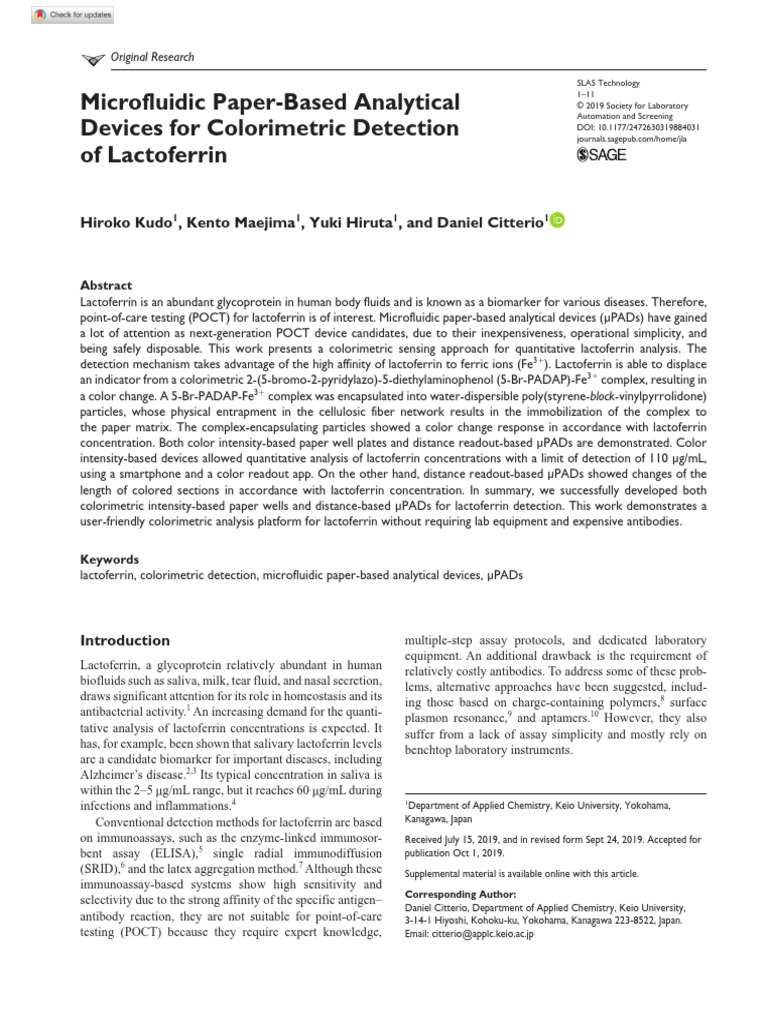In the rapidly evolving field of analytical chemistry, the integration of acoustofluidics with paper-based analytical devices (PADs) is revolutionizing how we approach diagnostics and environmental monitoring. This amalgamation not only enhances the sensitivity and specificity of detection methods but also promises a transformative shift in how we perceive and utilize analytical technologies.
To fully appreciate the significance of acoustofluidics-assisted multifunctional paper-based analytical devices, one must first understand the foundational elements of both components. Paper-based analytical devices have established themselves as powerful tools in the realm of diagnostics due to their cost-effectiveness, portability, and ease of use. The ubiquity of paper as a medium for analytical testing enables widespread access to diagnostic capabilities, especially in resource-limited settings.
However, traditional paper-based devices face limitations in terms of fluid manipulation and sensitivity. This is where acoustofluidics comes into play. By harnessing the principles of acoustics—specifically, the manipulation of fluids through ultrasound waves—researchers can induce a controlled movement of liquids within paper substrates. This method enhances the concentration and precision of analytes, facilitating a more reliable detection process.
Acoustofluidics operates on the premise that sound waves can generate acoustic forces capable of moving particles, cells, or droplets. This technology allows for the non-invasive manipulation of small volumes of fluid in a manner that traditional methods simply cannot achieve. Coupled with the porous nature of paper, this creates a symbiotic relationship that leads to remarkable advancements in analytical capabilities.
The versatility of multifunctional paper-based analytical devices lies in their ability to perform a myriad of analyses on a single platform. These devices can be designed to conduct various assays simultaneously, ranging from detecting biomolecules to monitoring environmental pollutants. The incorporation of acoustofluidics augments this capability by allowing for precise control over fluid movement and sample concentration, thus enhancing the overall efficacy and reliability of results.
One of the most compelling promises of acoustofluidics-assisted PADs is their potential application in point-of-care diagnostics. Imagine a scenario where a healthcare worker can quickly assess the presence of pathogens or biomarkers using a single device, which not only reduces the time to diagnosis but also cuts down on the need for complex laboratory infrastructure. This paradigm shift could especially benefit remote communities with limited access to healthcare, enabling timely interventions that could save lives.
Furthermore, the implications of this technology extend far beyond healthcare. Environmental monitoring, for instance, stands to gain significantly from these advancements. The ability to detect contaminants or toxic substances in water and air samples with heightened precision can lead to proactive measures in environmental protection. In an age where climate change and pollution pose grave threats to public health, such capabilities are invaluable.
What makes this fusion of technologies particularly intriguing is its potential for customization. Researchers can manipulate various parameters, such as the frequency and amplitude of the acoustic waves, to tailor the performance of PADs based on specific analytical needs. This adaptability opens up a treasure trove of possibilities, stimulating innovation in diverse fields ranging from food safety to forensic analysis.
Moreover, the aesthetic aspect of these devices should not be overlooked. Paper-based platforms inherently possess an elegance that can be both appealing and practical. This compatibility with user-friendly design principles encourages greater engagement from end-users and stakeholders alike. Visual clarity in the design can facilitate easier interpretation of results, making it more likely for laypersons to understand and use these devices effectively.
However, the integration of new technologies always comes with challenges. There are existing concerns regarding the reproducibility and robustness of results from PADs. As the field continues to evolve, overcoming these hurdles will be crucial in establishing trust and reliability in acoustofluidics-assisted devices. Rigorous validation studies will be needed to refine these devices and ensure they meet the high standards expected of analytical instruments.
The future of acoustofluidics-assisted multifunctional paper-based analytical devices is undoubtedly exciting. As research continues to refine the techniques surrounding these innovations, we can anticipate a migration towards more sophisticated applications, along with enhanced precision, efficiency, and accessibility. Imagine a world where diagnostics, environmental monitoring, and beyond can be achieved with a simple piece of paper engineered to do profound work.
This journey into the intersection of acoustofluidics and paper-based analytical devices is only just beginning. With continued investment and curiosity, the promise of enhanced analytical capabilities beckons on the horizon. As we forge ahead, this technology holds the potential to change our perspectives, urging us all to reconsider the immense possibilities tied to the seemingly mundane world of paper. In the convergence of science, innovation, and simplicity lies a future ripe with transformative potential.
